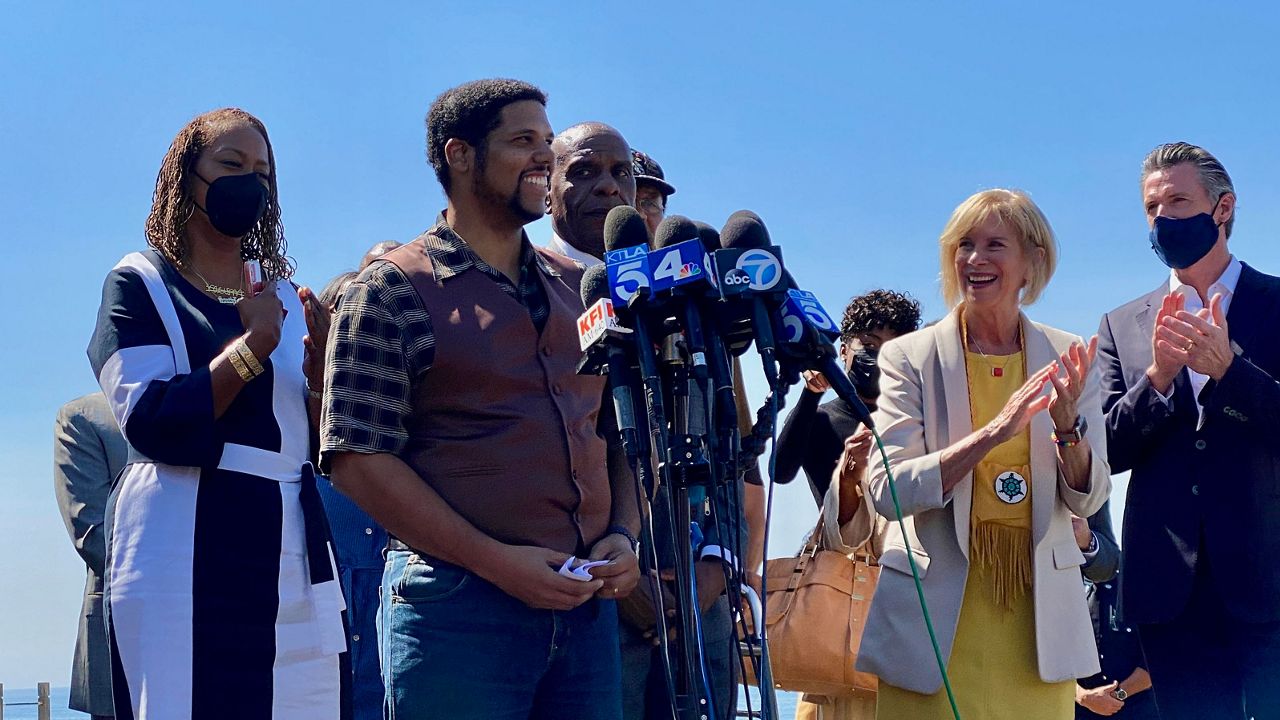A judge's ruling has cleared the way for Bruce’s Beach — a one-time Black-owned beach property that was forcibly sold via eminent domain — to be returned to the family’s descendants.
Last week, Los Angeles Superior Court ruled against attorney Joseph Ryan, representing himself, who sought a writ of mandate to stop the transfer of the Los Angeles County-owned property to the Bruce family descendant.
“Righting a government wrong perpetrated in breach of our core and fundamental constitutional principles works to strengthen governmental integrity, represents accountability in government and works to eliminate structural racism and bias,” Los Angeles Superior Court Judge Mitchell Beckloff wrote in his ruling.
Ryan filed his petition to stop the transfer just a few months after Governor Gavin Newsom approved a state law last year that would allow for Los Angeles County to transfer the property to the Bruce family. He argued that the property transfer would be a gift to the family, which is illegal under state law.
He also argued that the transfer would violate federal law (including the Equal Protection Clause of the U.S. Constitution) and that the eminent domain ruling prevents the county’s decision to transfer the property.
The court disagreed with all of those arguments, finding in part that, according to a state law passed to facilitate the transfer, the county’s action would be in the public interest, contrary to Ryan’s assertion of a public-to-private “gift.”
“As argued by (the county) during its hearing, redressing past acts of discrimination as well as preventing such acts int eh future benefits the whole of the community and its general welfare,” Beckloff’s ruling read.
In 1912, Willa and Charles Bruce purchased the first of two ocean-front lots in Manhattan Beach, building “Bruce’s Lodge,” an ocean-front resort intended for Black beachgoers — a necessity during a time when beaches were all but segregated by racist practices, if not law. It was among the first Black-friendly resorts in Southern California.
By the early 1920s, the city of Manhattan Beach moved to seize three city blocks, purportedly to build a park. The Bruces were compelled to sell their property, as were a handful of other Black landowners, all of whom made improvements on their lots. (Though White landowners were included in the proceedings, none had built structures on their properties.)
Though the land was graded and plans for a park were printed, a park was not developed at the site for decades according to a local historian. Eventually, through a series of land deals, control of the Bruce family parcels transferred from the city to the state to LA County, where parking lots and a lifeguard training center were built.
Amid the racial justice protests of the summer of 2020, in the aftermath of the murder of George Floyd, activists began calling for the land to be restored to the Bruce family descendants; before long, LA County officials and state legislators championed their efforts, eventually leading to the bill Newsom signed by the beach in September.
In his filings before the court, Ryan argued that “objectively indisputable” facts stated that Manhattan Beach did not discriminate against the Bruces. However, that discrimination was proven by a number of contemporary sources, including a news article written by a former Manhattan Beach trustee who admitted that he hand his colleagues acted to prevent the “Negro problem” from impeding the city’s progress.
Ryan was previously the subject of local news articles for his insistence on flying the Confederate battle flag as a “reminder” of the country’s racial history.
“I don’t really give a damn about the politics of liberal idiots who want to look at that flag and say, ‘oh that’s racist,’” Ryan told the Daily Breeze newspaper. “The last person you can call a racist is me.”
Ryan has not responded to a request for comment from Spectrum News.



